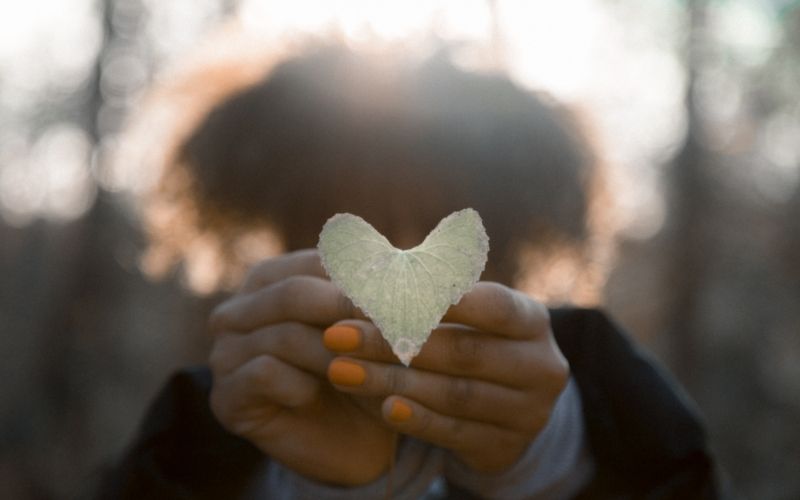welcome, I'm Melissa
Links
As a holistic coach, psychologist, mindfulness, meditation & yoga instructor, & Ayurvedic doula I offer personalized paths to growth & healing.
you may also like...
How to Practice Self-Forgiveness: 4 Exercises
May 13, 2021
Research has shown that those who practice self-forgiveness have better mental and emotional well-being, more positive attitudes and healthier relationships. But in order to practice self-forgiveness, we first need to understand what self-forgiveness means.
Self Forgiveness Definition

Western psychology and contemplative perspectives offer only some of the many views on forgiveness. Self-forgiveness is also explored in various religious traditions and spiritual realms. If you are drawn to any particular religious or spiritual wisdom and teachings, consider the extent to which those traditions may intersect with or complement this discussion.
From the lens of western psychology, self-forgiveness tends to be defined as…
The practice of releasing the resentment or hatred we feel toward ourselves for our own actions.
There may be opportunities for self-forgiveness when we blame ourselves for a mistake we made or regret a certain life decision.
Self-forgiveness is not about condoning or approving of behaviors that have hurt others or ourselves; it’s about fully accepting the reality of what has happened and holding ourselves accountable.
The process of self-forgiveness is independent of seeking forgiveness from others. We can forgive ourselves even when others have not expressed forgiveness to us.
Self-forgiveness can be really challenging, and our ability to forgive ourselves is also correlated with self-compassion. Self-compassion is associated with higher levels of success, productivity, focus and concentration. In comparison, those who are highly self-critical are more likely to experience significant negativity, stress and pessimism.
RELATED: SIGN UP TO OUR FREE 4-PART VIDEO SERIES…
THE SCIENCE AND SOUL OF BUILDING RESILIENCE
LEARN MORE HERE!
How Do You Forgive Yourself? 4 Self-Forgiveness Exercises

Though there are some differences among western psychological models, they do share some commonalities regarding the practice of self-forgiveness.
Let’s explore four phases of self-forgiveness, bringing together concepts from both psychological and contemplative teachings.
These self-forgiveness exercises are not necessarily linear, and at times, they may overlap.
Phase 1. Acknowledgement + Accountability
Explore what happened and acknowledge it emotionally and cognitively.
Usually, the surfacing of self-blame is the first sign that we have hurt ourselves or someone else or violated our values in some way.
We may experience feelings of guilt, regret or remorse. Part of this self-forgiveness exercise is recognizing these emotions and resisting urges to suppress, ignore or minimize them.
Instead, treat these feelings as important guides and teachers.
This phase involves a grounding or centering practice so that you can engage in the process of self-forgiveness.
- Consider what helps you feel grounded in the reality of the present moment. For example, go for a walk in the woods or focus on your breathing.
- Spend time in a practice that truly grounds you and enables you to arrive in a more centered, grounded, clear-headed place.
Phase 2. Seek Understanding with Self-Compassion
Once you come to a more settled place, reflect on the reality of what happened.
- Slow down the tape of your memory, and try to remember all of what transpired, connecting with all of the sensory details.
- Create a deeper sense of empathy by imagining what this was like for the other person — even if you were hurt, too.
You may find that some details are more painful than others, but try to stay with those emotions as best you can. And if it feels too overwhelming, pause and come back to this, honoring where you are in this process. This may be a phase you return to for quite some time.
One aspect of understanding with self-compassion is to honor and remember the context in which those actions occurred.
- Was there anything that made you vulnerable to certain behaviors, such as an illness, sleep deprivation or a recent stressor?
- Was a past emotional trauma or hurt activated, leading you to be angry, guarded, defensive or critical?
- What was the influence of personal values, cultural norms and expectations?
Strive to describe the entirety of the circumstances in an objective, factual, non-judgmental and self-compassionate way.
Remember that we all hurt others, even the people we love the most. We may not feel deserving of forgiveness, and not allowing forgiveness can be a way of punishing ourselves.
Phase 3. Make Amends + Repair
We cannot self-forgive until we have made efforts, as best we can, to make amends and repair the situation.
Muster the courage and willingness to face this truth and repair whatever harm we have caused.
Try to make amends in a way that resonates with the person and is connected to the transgression.
Note: Part of the repair process also means accepting consequences gracefully and without defensiveness.
Someone may not wish to be in our lives anymore or may need time and space away. Honor their needs.
If someone is not open to your amends and repair, get creative about how to achieve this. For example, write a letter that you don’t mail or send a prayer of love and kindness to them.
While it may be harder to forgive ourselves when we haven’t received forgiveness, there is a difference between seeking forgiveness from someone and our process of self-forgiveness. Self-forgiveness is for ourselves — to be in alignment with ourselves and able to still find our innate goodness even with our harmful actions.
Phase 4. Engage in Committed Action
Immediate repair is not the only goal of the practice of self-forgiveness.
How can we learn from our mistakes and make different choices in the future, dedicating ourselves to not causing further suffering?
Committed action may also mean returning to the practice of self-forgiveness again and again.
The Path to Self-Forgiveness: Next Steps
Self-forgiveness can be a transformative path; woven through these four phases, we embrace the values of:
- Bravery
- Self-compassion
- Acceptance
- Integrity
- Commitment
If you’d like to dig deeper in the practice of self-forgiveness, including a guided meditation and mudra highlighting these four phases, listen to the full podcast episode:
You can also learn more about my coaching practice through this free video series: The Science & Soul of Building Resilience. In this 4-part series you’ll learn:
- Body awareness to help us center ourselves and live in a present-focused & embodied way even in the midst of stress
- Decreasing our stress response so we can access intuition & connect to our needs
- Values clarification to guide decisions about prioritizing our time, attention, & energy
- Self-compassion to soften our harsh inner critics & facilitate growth following mistakes
SIGN UP to Get Instant Access!
MAKE SURE TO SUBSCRIBE TO THE SCIENCE & SOUL OF LIVING WELL PODCAST!
Apple | Google | Spotify | iHeart | Audible
You can also contact me or join us on Instagram – @drfoynes.
Freebie Alert!
Freebie Alert!
Newsletter
Sign up to get a dose of love, inspiration, wisdom &
all the latest news on events straight to your inbox.
privacy
terms
made with ❤ by habitat society
Explore
©2022, Melissa foynes
Thank you
You're subscribed to my newsletter. Please whitelist my email to make sure you don't missing anything I send you.

